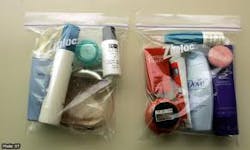International Aviation Authorities Recommend Relaxing Rules About Liquids on Planes
With better screening technology available today, Canada and other western countries are examining whether easing the restrictions on boarding planes with liquids makes sense, according to a working paper presented to the International Civil Aviation Organization.
The paper, presented by by Australia, Canada and the United States, urges United Nations assembly members to consider gradually lifting restrictions on liquids, aerosols and gels (LAGS), beginning in January, by deploying technology that is better able to detect hazardous substances.
"A technological solution now exists and the governments of Australia, Canada, the United States and the European Union are working towards implementing LAGs screening to enable a phased relaxation of restrictions," the paper says.
The paper proposes the first phase begin on Jan. 31, 2014. This phase would allow the screening of baby food, medications and liquids sealed in secure tamper-evident bags. Subsequent phases would eventually end the need for small 3.4-ounce containers.
Authorities issued the ban on liquids, gels and aerosols in 2006 after British authorities foiled a plot to hide explosives in soft-drink bottles to blow up passenger planes bound for Canada and the United States.
The new rules arrive as U.S. officials also consider ending the ban on using portable wireless devices during flights. According to news reports, the FAA is expected to recommend rolling back restrictions in order to allow passengers to read read e-books, or watch videos. Placing phone calls or sending e-mails and text messages would still be forbidden.
